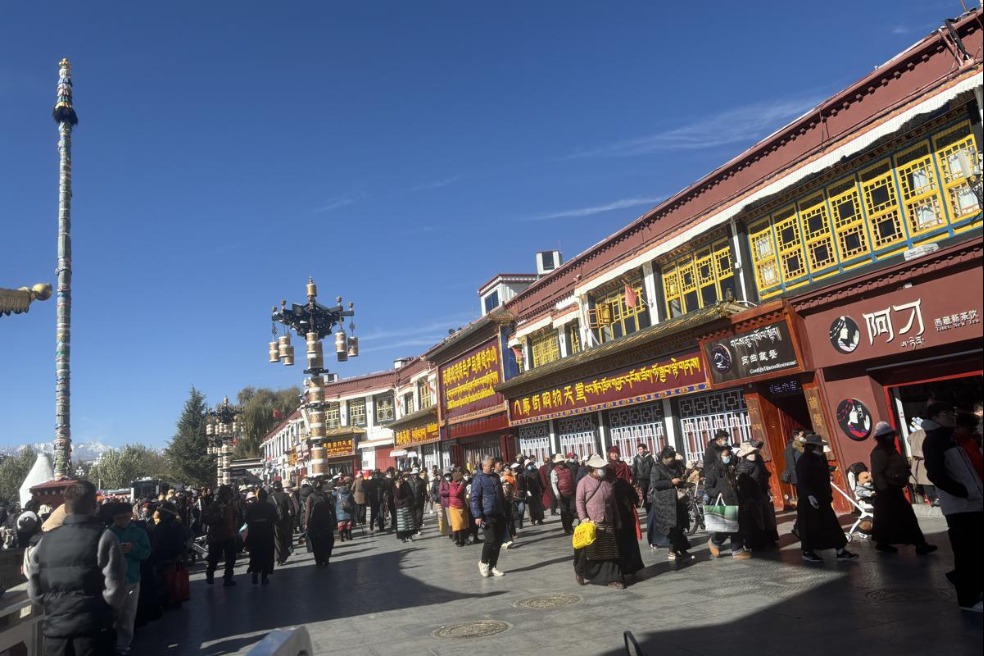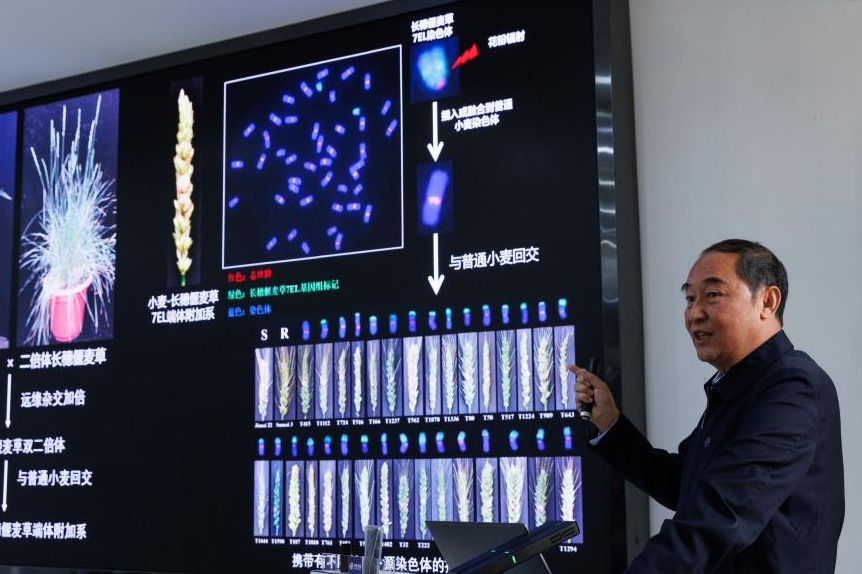Building up a legacy
Documentary sheds light on the 200-year history of a family at the forefront of designing and constructing imperial landmarks, Wang Ru reports.

In 1860, on a devastating night when Anglo-French forces were looting and burning Yuanmingyuan, the Old Summer Palace in Beijing, Lei Jingxiu, who worked as head of the Yangshi Office, the imperial architectural design institute at that time, was anxious to hear just what exactly was unfolding.
Risking their lives, he rushed to the office in Yuanmingyuan with his son and colleagues, salvaged architectural archives and models related to imperial architecture of the Qing Dynasty (1644-1911), and got them back to his house.
Their courageous efforts saved the archives from being destroyed. The surviving records played an important role for architects to study the designs and construction of Qing imperial architecture decades later, and have enabled people of the present time to get a glimpse of the past glory of the imperial garden.
The story is recounted in the five-episode documentary Yangshi Lei, which was produced by the TV series and documentary center of the China Media Group, and broadcast on the documentary channel of China Central Television in March.
Yangshi Lei was a family of architects prospering during the Qing Dynasty. Many of its members worked as chief architects for the Qing court and designed buildings which are now world cultural heritage sites in China, including the Summer Palace in Beijing, the Eastern and Western imperial Qing tombs, and the Mountain Resort in Chengde, Hebei province.
Highs and lows
According to Qing files, yangshi refers to those who were engaged in architectural design, and Lei was the surname of the family.
The documentary shows the story of the Yangshi Lei family, so that people can see how ideas were passed on and inherited in a family of creative skilled workers, and gain a deeper understanding of the wisdom and creativity of ancient Chinese artisans, says Liu Qian, producer of the documentary.
The family extended eight generations, spanning more than 200 years when its members served the Qing court, and the destiny of the family was closely linked to the prosperity and decline of the dynasty, according to Liu.
The family story began when Lei Fada, a craftsman specializing in carpentry, made a key decision at the age of 64 to migrate from what is now Nanjing in Jiangsu province to Beijing, the imperial capital, since the Qing court was recruiting expert craftsmen nationwide to build royal architectural complexes during the reign of Kangxi (1662-1722).
With his proficiency, Lei Fada was successfully recruited, and engaged with the reconstruction of the Forbidden City. Since then, generations of the Lei family joined the business by working at the Yangshi Office, and many of them ascended as head of the office with their outstanding skills.
"We focused on stories of the family members, since the stories of people are always appealing," says Liu. "We tell stories of one or two generations of the family in each episode, viewing the Qing history from the perspective of this family."
For example, the production elaborates on the story of a woman surnamed Zhang, who didn't leave her full name in written records, but played a vital role in inheriting and passing on the construction crafts, and thus extending the family's glory.
In 1729, during the reign of Yongzheng (1722-35), Lei Fada's son Lei Jinyu, who had won recognition from the emperor and widespread fame with his effort designing and building Yuanmingyuan, passed away without imparting his craft to his offspring.
As a result, Lei Jinyu's four sons chose to do other work, only leaving Zhang, the last wife of Lei Jinyu, who was young and had just given birth to his fifth son, Lei Shengcheng, three months before his death.
After dividing family property, Zhang lived apart from Lei Jinyu's other sons and brought up Lei Shengcheng on her own. A tablet inscription commemorating the woman written by her offspring many years later records they lived an "extremely poor life" at that time.
But with his mother's efforts, Lei Shengcheng had the opportunity to learn construction skills from colleagues of his father from childhood, and continued his ancestors' craft at the Yangshi Office when he grew up. His three sons all inherited the craft and gave full play to their talent and skills during the reign of Qianlong (1736-96), a prosperous time for imperial constructions.
"The Lei family fell into the trough, with their craft twice close to being lost. But there was always someone in the family who stood out, turned the tide with vigorous efforts and brought the family to reach a new peak in their career," says Liu.
Through the production, people can see what has been passed down in the long history is not only the craft, but also the spirit of toughness, diligence and meticulousness of the artisans, she adds.
Lasting influence
Crew members spent the whole of 2022 in shooting the production, since they wanted to show the beauty of the Qing architecture in four seasons, of which the family members had joined the construction, according to Huo Ming, general director of the documentary.
"Ancient Chinese architecture highlighted the combination of architecture and natural environment, which means the change of seasons helped the architecture show different beauty and charm," says Huo.
Materials from the Yangshi Lei archives are now stored at the National Library of China in Beijing, as a reference for the production and the research of many scholars on the family and ancient architecture.
Zhu Qiqian, who started to record Chinese architectural history in a systematic manner, made a great contribution to ensuring the archives didn't get lost in the turbulent time of the 1930s.
In 1930, when the offspring of the Lei family were selling the ancestral architectural archives and models to support their family, Zhu ensured the archives and models would be collected by the National Library of Peiping, the precursor of the National Library of China. In this way the archives were kept safe.
Zhu also conducted textual research on the history of the family tree, notes and letters brought to him from Lei family's offspring.
The documentary commemorates the 150th anniversary of the birth of Zhu in 2022. "It was Zhu who farsightedly realized the value of Yangshi Lei archives and kept the precious architectural cultural heritage in a chaotic time. He also left us the legendary story of an imperial architects' clan," says Huo.
Western architecture circles, according to Liu, believed for a long time that China's architecture was built only with artisans' experience without careful design. And that misunderstanding was caused by the fact that ancient architectural techniques were passed down by word-of-mouth or hands-on teaching in ancient China, without leaving word or picture legacies.
"The Yangshi Lei family is the only architect clan which has left rich written materials like architectural designing archives, family trees, family members' notes and letters in China," says Liu.
"Our research on their archives proves that China's ancient buildings have complete and systematic design ideas, and reflect the wisdom of ancient Chinese artisans. It also helps to fill in the gap in the research of China's history of ancient architecture," she adds.



Today's Top News
- Judicial reform critical for modernizing governance
- Effective use of investment emphasized
- China's shuttle diplomacy strives to reach ceasefire
- Nanjing Museum's handling of donated art, relics being probed
- Key role of central SOEs emphasized
- New travel program hailed as 'milestone'






























